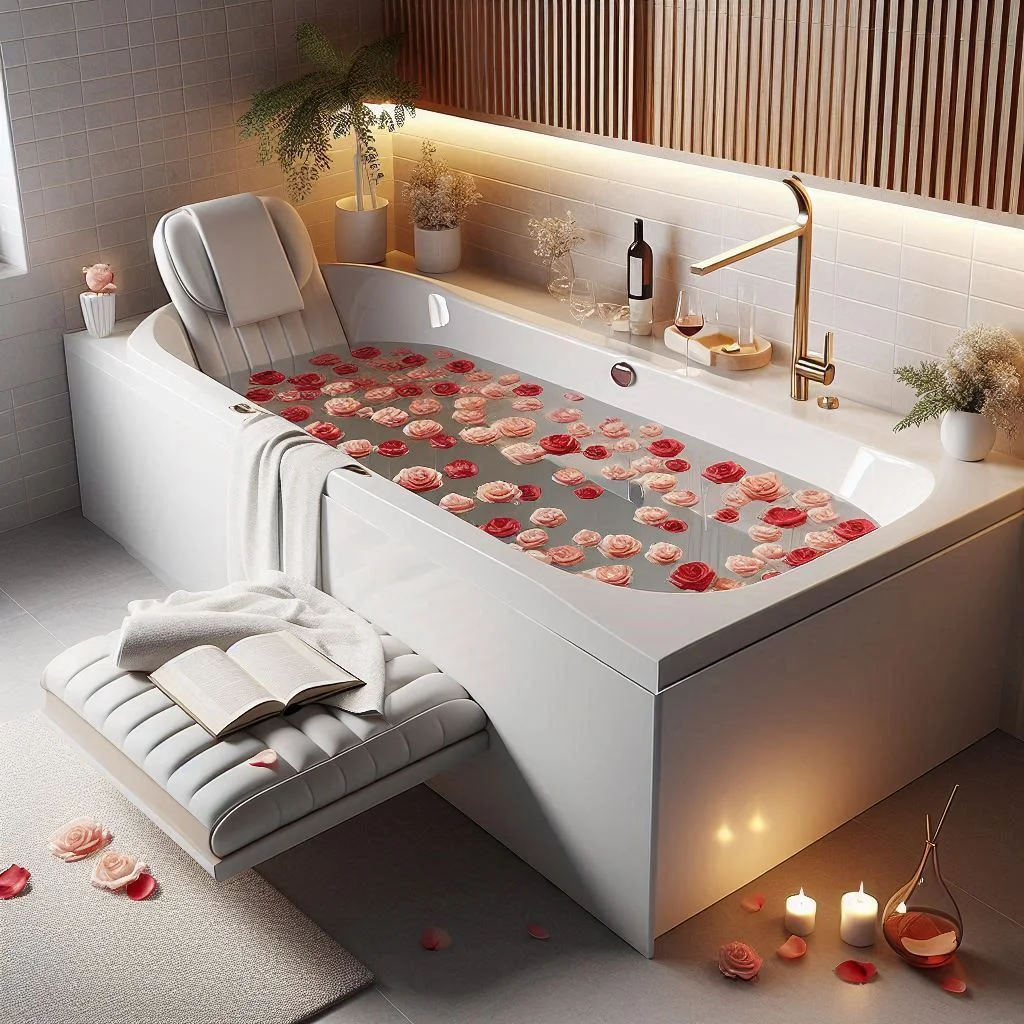Guide to Solid Surface and Resin Bathtubs
Solid surface and resin bathtubs have become increasingly popular in modern bathroom design, offering a perfect blend of aesthetics, durability, and functionality. This comprehensive guide will explore everything you need to know about these innovative bathtub materials, from their composition and benefits to maintenance and installation considerations.
Understanding Solid Surface and Resin Bathtubs
What Are Solid Surface Bathtubs?
Solid surface bathtubs are made from a blend of natural minerals, such as alumina trihydrate (ATH), and high-performance acrylic or polyester resins. This combination results in a non-porous, durable material that can be molded into various shapes and designs.
What Are Resin Bathtubs?
Resin bathtubs are typically made from engineered composite materials, often a mixture of polyester or epoxy resins with mineral fillers. These tubs offer similar benefits to solid surface tubs but may have slightly different properties depending on their specific composition.
Advantages of Solid Surface and Resin Bathtubs
1. Durability and Longevity
Solid surface and resin bathtubs are highly resistant to scratches, chips, and stains. According to the National Kitchen and Bath Association (NKBA), these materials can last up to 30 years or more with proper care and maintenance.
2. Design Flexibility
These materials can be molded into various shapes and sizes, allowing for unique and custom designs. This flexibility enables homeowners to create truly personalized bathroom spaces.
3. Seamless Appearance
Solid surface and resin tubs often feature a seamless design, which not only enhances their aesthetic appeal but also makes them easier to clean and maintain.
4. Heat Retention
These materials have excellent heat retention properties, keeping bathwater warm for longer periods compared to traditional materials like acrylic or fiberglass.
5. Non-Porous Surface
The non-porous nature of solid surfaces and resin tubs makes them highly resistant to bacteria and mold growth, promoting a more hygienic bathroom environment.
Considerations When Choosing a Solid Surface or Resin Bathtub
1. Cost
While generally more expensive than acrylic or fiberglass options, solid surface and resin tubs offer long-term value due to their durability and longevity. Prices can range from $1,500 to $10,000 or more, depending on size, design, and brand.
2. Weight
These tubs are typically heavier than acrylic or fiberglass alternatives. Ensure your bathroom floor can support the weight, especially for freestanding models. Consult with a structural engineer if necessary.
3. Installation Requirements
Due to their weight and sometimes complex designs, professional installation is often recommended for solid surface and resin tubs. The National Association of Home Builders (NAHB) provides guidelines for proper bathroom fixture installation.
4. Color and Finish Options
While these tubs offer a wide range of color options, be aware that darker colors may show water spots more easily and require more frequent cleaning.
Maintenance and Care
Proper maintenance is key to preserving the beauty and functionality of your solid surface or resin bathtub:
1. Regular Cleaning
Clean your tub regularly with mild, non-abrasive cleaners. Avoid harsh chemicals or abrasive scrubbers that could damage the surface.
2. Addressing Minor Damage
Minor scratches or scuffs can often be buffed out using fine-grit sandpaper and polishing compounds. For deeper scratches or chips, consult a professional for repair.
3. Preventing Stains
While resistant to staining, it’s best to clean up any spills promptly, especially from hair dyes, cosmetics, or other potentially staining substances.
4. Avoiding Extreme Temperatures
While these tubs are heat-resistant, avoid exposing them to extreme temperature changes, which could cause thermal shock and potential damage.
For more detailed cleaning and maintenance tips, refer to the EPA’s Safer Choice program for environmentally friendly cleaning product recommendations.
Environmental Considerations
When choosing a bathtub material, consider its environmental impact:
1. Recyclability
Many solid surface and resin materials are recyclable at the end of their lifespan, contributing to a more sustainable bathroom design.
2. VOC Emissions
Look for tubs made with low volatile organic compound (VOC) resins to minimize indoor air pollution. The U.S. Green Building Council provides guidelines on sustainable material choices for home renovations.
3. Longevity
The durability of these tubs means they need to be replaced less frequently, reducing waste and resource consumption over time.
Comparison with Other Bathtub Materials
To help you make an informed decision, here’s a brief comparison of solid surface and resin tubs with other common materials:
| Feature | Solid Surface/Resin | Acrylic | Cast Iron | Fiberglass |
|---|---|---|---|---|
| Durability | High | Medium | Very High | Low |
| Heat Retention | Excellent | Good | Excellent | Poor |
| Weight | Medium-High | Light | Very Heavy | Very Light |
| Design Flexibility | High | Medium | Low | Medium |
| Cost | High | Medium | High | Low |
Conclusion: Making the Right Choice for Your Bathroom
Solid surface and resin bathtubs offer a compelling combination of durability, design flexibility, and aesthetic appeal. While they may require a higher initial investment, their longevity and low maintenance requirements can provide excellent value over time. When choosing a bathtub material, consider factors such as your budget, design preferences, maintenance willingness, and long-term plans for your home.
Remember to consult with bathroom design professionals and reputable manufacturers to ensure you select the best option for your specific needs and preferences. With proper care and maintenance, a solid surface or resin bathtub can be a beautiful and functional centerpiece in your bathroom for many years to come.
For more information on bathroom design and renovation, explore our articles on choosing the perfect bathroom fixtures and creating a spa-like atmosphere in your home bathroom.
Internal Linking Opportunities:
- “10 Stunning Bathroom Design Ideas for Modern Homes”
- “How to Choose the Right Bathtub Size for Your Space”
- “Eco-Friendly Bathroom Renovations: Sustainable Materials and Practices”





